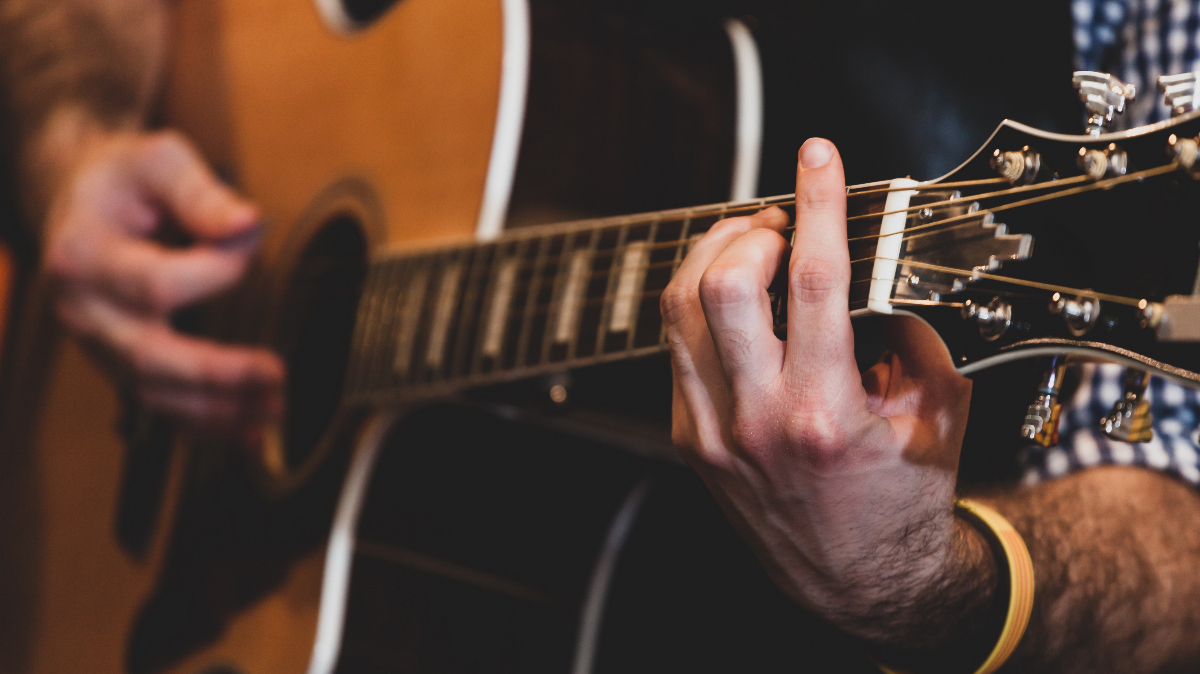
Most people are accustomed to changes in technology having a measurable impact on every aspect of their lives from how they drive, to how they communicate, to how they receive care from their doctor.
However, if you asked them if tech had knocked on guitarists doors yet, most would probably assume not. For most people, guitars and guitar technology is assumed to be the same as it has been since the 70s – a guitar plugged into a huge amp, blowing the hair back for anyone within 50 feet.
However, this is far from the case. In fact, guitarists have been finding ways to innovate their sounds for decades, going back to when Les Paul himself (yes, there was a guy before the guitar) used two tape machines played in series to get a rudimentary delay sound going.
Nowadays, guitarists are overrun with digital this and advanced that, but here we’re going to talk about three ways that tech has actually changed guitarists lives.
Affordable Home Recording
Most people assume you need a high quality, expensive recording studio to get a professional quality recording of your music, and until recently, they were right.
There have always been home recording options – Tascam, Fostex and other companies have long made affordable “four track” machines that allow you to get the basics of a song recorded at home to share with others.
However, in the last few years, there has been a huge proliferation of low cost guitar interfaces, which are essentially converters for an audio signal into a digital signal, allowing you to record music on your home computer.
This has been such a game changer for guitarists that many bands now opt to only record drums in a real studio, doing all of the guitars, bass and vocals at home and then sending the whole lot off to get mixed.
Budget Modeling Amps
When I started playing guitar in the 80s, affordable home practice amps were, in a word, terrible. Generally speaking, you had a small tinny speaker being powered by cheap components who’s only goal was to get sound out, without too much attention being paid to making it especially pleasing.
At some point along the way, someone came up with these digital “modelling” amps, and everything changed. Essentially, a modelling amp has a digital component that, instead of creating a single characteristic sound of that amp, emulates or “models” the tone of a wide variety of amps, giving the end user near infinite choices of sounds from the amp.
The daddy of them all is the Boss Katana 50 MKII, a budget practice amp with incredibly advanced modelling, giving near perfect recreations of hundreds of other amps, as well as the full range of Boss’s guitar pedals. Not only that, but the speaker in the Katana is much higher quality than it has any right to be, and is loud enough to hold it’s own with a band.
This is a game changer for learner guitarists as they’re not stuck with a muddy sound, and they’re ready to jump in and play with a band as soon as they want.
Portable Profiling Amps
Similar to modelling amps, profiling amps allow a guitarist to capture the tone of any guitar amp, though typically to a much higher quality than modelling amps.
Where modelling amps are popular with amateurs and local musicians, high quality profiling amps are used by the likes of The Edge and Metallica.
The advantages for these bands are three fold.
Firstly, where bands would normally use many amps for recordings and then use one amp for a rough approximation in a concert setting, they can now profile all of the amps used on an album and use them when playing those songs live.
Additionally, where traditional analog amps are subject to changes in temperature, bad power and such, digital profiling amps sound the same night after night.
Finally, profiling amps can be the size of a shoebox. This means that for bands who are playing a run of festival dates where they fly in, play, and fly home, they can simply check a guitar into luggage, put their profiling amp in their overhead, and save thousands of dollars on transporting gear for each show.
Conclusion
There are very few aspects of society and every day life that have not been touched by technology, and guitarists are no exception. While this list isn’t exhaustive, it should give you at least an insight into how digital technology has made guitarists lives so much easier and richer in the last few years.




